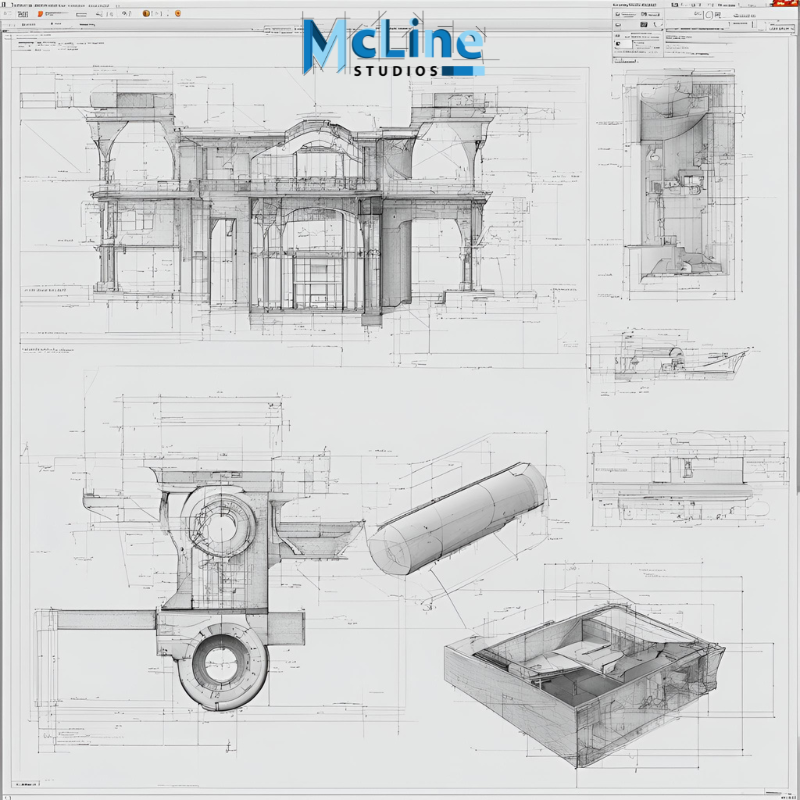10 Essential CAD Drafting Tips Every Beginner Should Know

10 Essential CAD Drafting Tips Every Beginner Should Know
CAD drafting is a fundamental skill for anyone venturing into design, engineering, or architecture. In this guide, we'll explore ten essential tips to help beginners navigate the world of Computer-Aided Design (CAD) drafting with confidence. From mastering software interfaces to practicing precision and embracing continuous learning, these tips will lay a strong foundation for your CAD journey. Let's dive in and unlock the secrets to successful CAD drafting for beginners.
Tip 1: Understand the Software Interface
Navigating the software interface is the first step towards mastering CAD drafting. Take time to familiarize yourself with the workspace layout, toolbars, and menu options. Learn the basic functions such as drawing tools, editing commands, and layer management. Customizing your workspace to suit your preferences can also enhance your efficiency.
Tip 2: Master the Basics of Sketching and Drawing
Developing proficiency in sketching and drawing is essential for effective CAD drafting. Begin by learning fundamental drawing commands such as line, circle, and arc. Practice creating and modifying shapes using these tools. Familiarize yourself with editing commands like trim, extend, and offset to refine your designs.
Tip 3: Utilize Layers Effectively
Organizing your drawings into layers is crucial for maintaining clarity and efficiency in CAD drafting. Understand the importance of layer organization and adhere to best practices for naming and managing layers. Learn how to create, modify, and delete layers as needed.
Tip 4: Practice Precision and Accuracy
Precision and accuracy are paramount in CAD drafting. Focus on refining your skills to ensure that your designs meet exact specifications. Utilize snapping tools and gridlines to align elements with precision. Learn techniques for dimensioning and measuring to maintain accuracy throughout your drawings.
Tip 5: Learn Keyboard Shortcuts
Mastering keyboard shortcuts is a game-changer in CAD drafting efficiency. Familiarize yourself with essential shortcuts for frequently used commands like drawing, editing, and navigating. Discover the benefits of using shortcuts to streamline your workflow and increase productivity. Customize shortcuts to match your preferences and workflow style.
Tip 6: Always Save Your Work Regularly
Making it a habit to save your work regularly is crucial in CAD drafting. Understand the importance of saving your progress to prevent data loss in case of unexpected software crashes or system failures. Learn how to save and back up your CAD files securely to avoid potential setbacks. Implement practices for version control and file management to keep track of changes and revisions.
Tip 7: Pay Attention to Units and Scale
Maintaining consistency with units and scale is essential in CAD drafting. Understand the significance of using the correct units of measurement for your projects, whether it's inches, millimeters, or another unit system. Learn how to set and modify units within your CAD software to match project requirements accurately. Follow guidelines for scaling drawings to ensure that proportions and dimensions are accurately represented.
Tip 8: Embrace Continuous Learning
In CAD drafting, there's always something new to learn and explore. Embrace a mindset of continuous learning to enhance your skills and stay updated with the latest advancements in the field. Recognize CAD drafting as a constantly evolving discipline and seek out resources for further education, such as online courses, tutorials, and professional development programs. Dedicate time to practice and experiment with new techniques and features in your CAD software.
Tip 9: Seek Feedback and Critique
Feedback is invaluable in the journey of mastering CAD drafting. Actively seek feedback and critique from peers, mentors, or online communities to gain insights and perspectives on your work. Participate in forums or groups where you can share your designs and receive constructive criticism. Be open to suggestions for improvement and use feedback as a learning opportunity to refine your skills.
Tip 10: Develop Good Habits and Workflows
Establishing good habits and workflows is essential for efficiency and consistency in CAD drafting. Create a structured approach to your work, including organizing files, naming conventions, and version control. Develop a systematic workflow that suits your style and project requirements, incorporating checkpoints for quality assurance.
Conclusion
In conclusion, mastering CAD drafting requires a combination of technical skills, efficient workflows, and a mindset of continuous improvement. By implementing the ten essential tips outlined in this guide, beginners can build a solid foundation for success in the world of Computer-Aided Design.
From understanding the software interface to developing good habits and workflows, each tip plays a crucial role in enhancing efficiency, precision, and creativity in CAD drafting projects. By embracing these tips, beginners can navigate the complexities of CAD drafting with confidence, unlocking their potential to create professional-quality designs.
Remember, CAD drafting is not just about mastering software tools; it's about fostering a mindset of curiosity, learning, and growth. So, let's embark on this journey of discovery, innovation, and mastery, and unleash the full potential of CAD drafting for beginners.
- Industry
- Art
- Causes
- Crafts
- Dance
- Drinks
- Film
- Fitness
- Food
- Παιχνίδια
- Gardening
- Health
- Κεντρική Σελίδα
- Literature
- Music
- Networking
- άλλο
- Party
- Religion
- Shopping
- Sports
- Theater
- Wellness
- News


